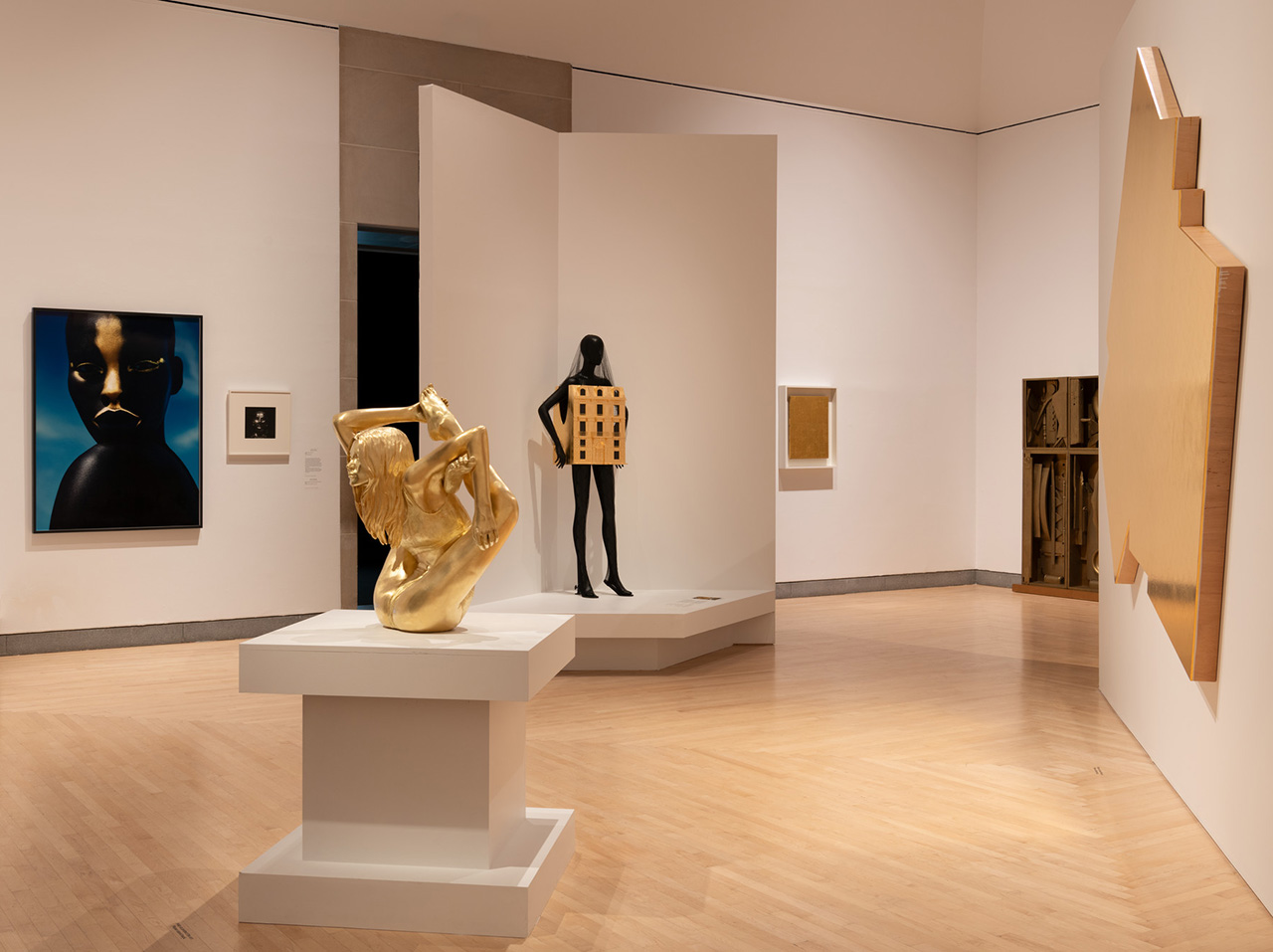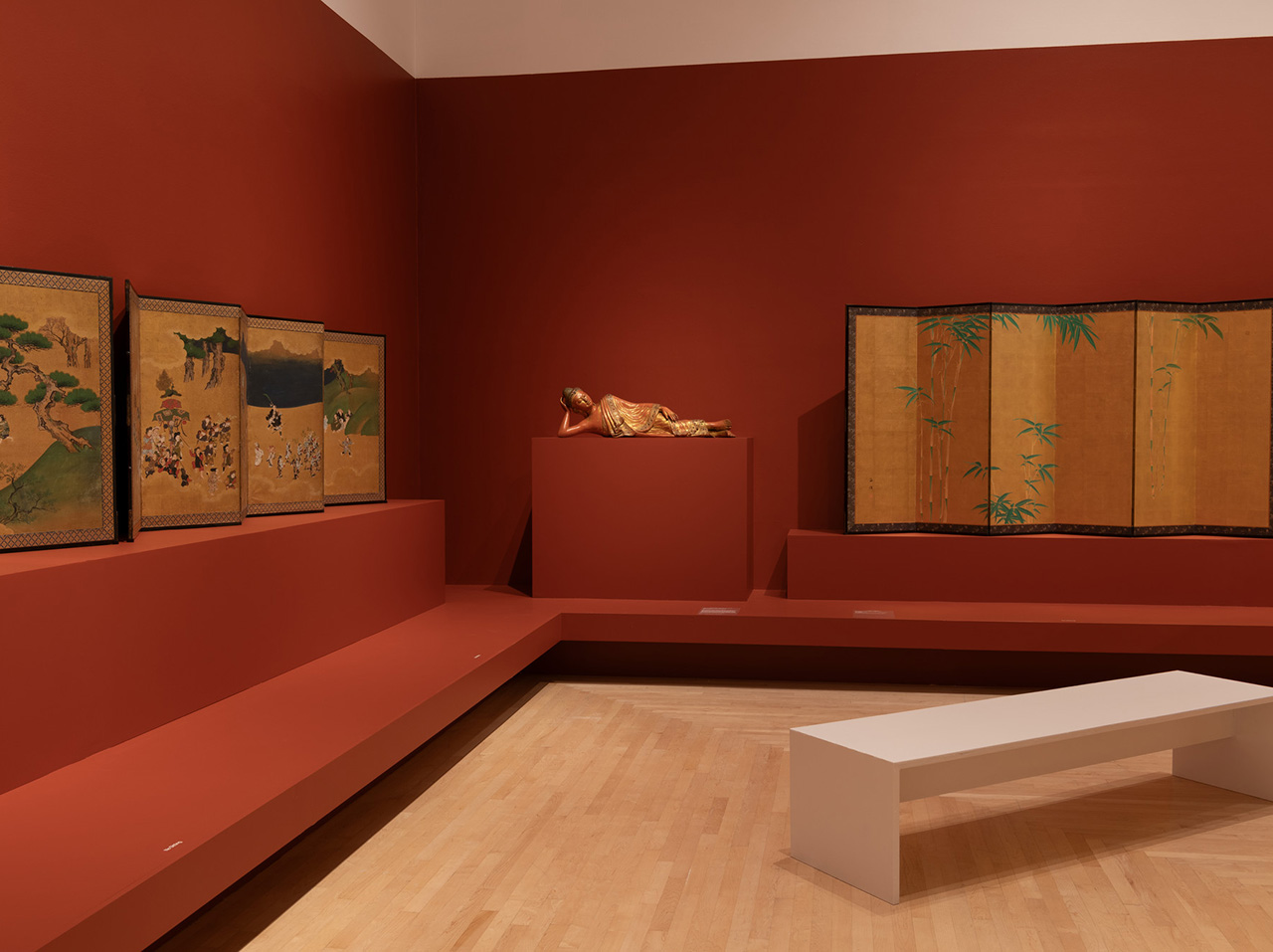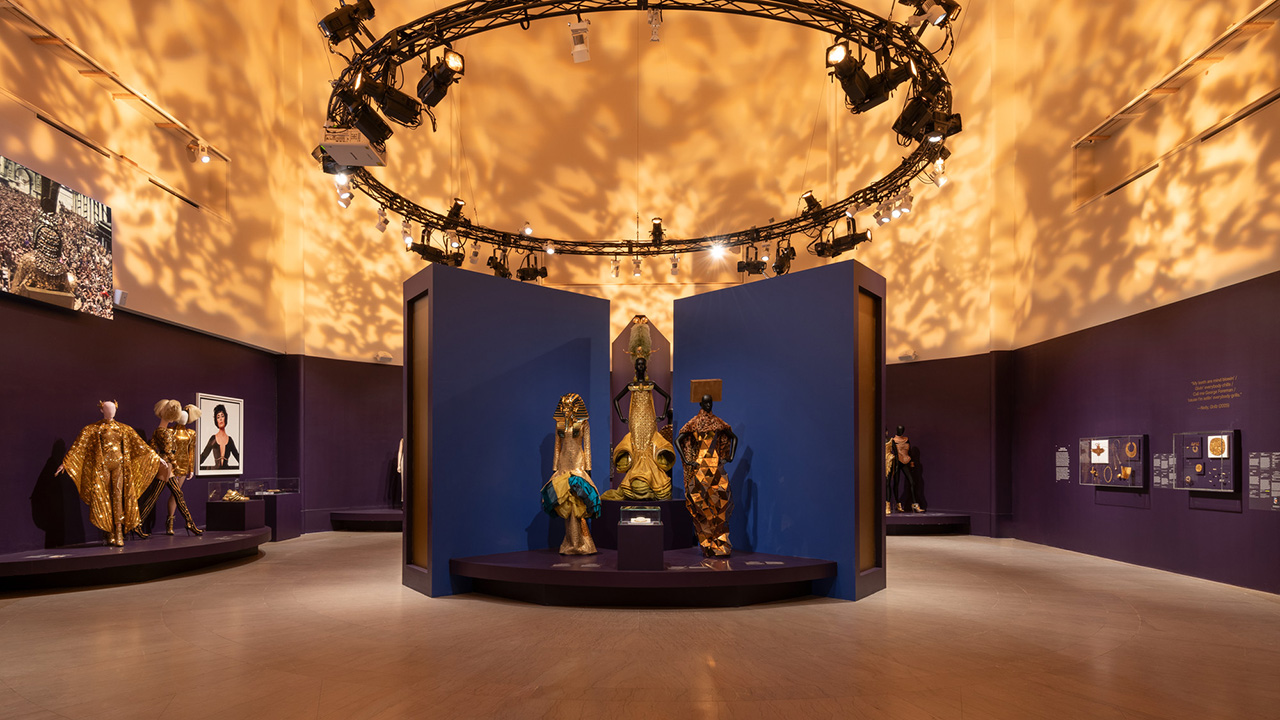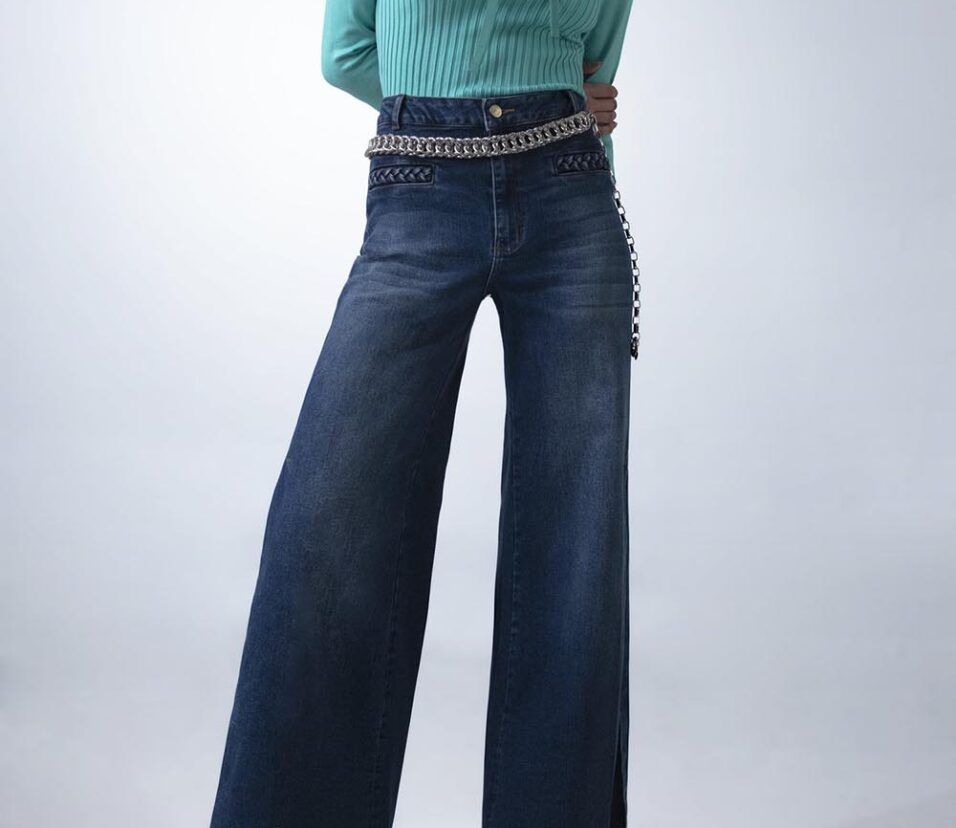The Brooklyn Museum Turns 200

A funerary mask from the glittering tombs of ancient Egypt, a gold-ground painting of the Madonna and child, Charlize Theron’s Dior J’Adore dress encrusted in shimmering beads and sequins, and an 18-karat Marc Quinn sculpture of Kate Moss: these are just a few of the more than 400 seemingly disparate objects assembled for Solid Gold, a major exhibition commemorating the Brooklyn Museum’s bicentennial that opens today. Cross-disciplinary in scope and incorporating pieces ranging from painting, sculpture, and film to fashion and jewelry, the show’s throughline is the enduring appeal that gold has held across 6,000 years of human history. It’s a fitting subject for one of the oldest and most encyclopedic art museums in the United States, which traces its origins to 1824, nearly half a century before the Metropolitan Museum of Art was founded across the East River in Manhattan.

“Gold—could we have picked a bigger topic?” quips the exhibit’s organizer, Matthew Yokobosky, senior curator of fashion and material culture at the Brooklyn Museum. It’s uncertain just when humans first encountered gold and began to create decorative objects out of it; the earliest surviving examples are gold beads discovered in Egypt dating to the fourth millennium B.C.E, before the development of written language. But gold was as integral to ancient civilizations of the Mediterranean and pre-Hispanic Americas as it is to the contemporary fashion world. Across the globe, gold has come to symbolize the apex of beauty, honor, joy, ritual, spirituality, success, and wealth.
“A keyword search for ‘gold’ on our collections management system yielded quite a vast array of objects,” says Yokobosky, noting the museum’s extensive holdings of Quattrocento paintings, Japanese folding screens, and objets de vertu. Yokobosky narrowed down a field of 4,000 candidates that were either made of gold or gold in color to 240 after examining them in person. “Your screen makes gold look really beautiful no matter what kind of gold it is, so photographs that you see online can be very deceiving,” he explains.

Organized into eight largely chronological sections spread across the Cantor Rotunda and fifth floor galleries in the museum’s West Wing, Solid Gold will present historical works from the permanent collection in what the Yokobosky calls “collisions” with 20th- and 21st-century fashion and accessories, sparking conversations across millennia. Yokobosky sourced the latter from houses including Tiffany & Co., Bulgari, and Dior, an exhibition sponsor.
The Ancient Gold gallery places the aforementioned cartonnage—dating to the 1st century C.E., its gilded surface depicts a woman with snake bracelets coiling up her arms—beside a Cartier Scarab bracelet, a prototype of the Joseff of Hollywood fly necklace Elizabeth Taylor wore in the 1963 film Cleopatra, and Nefertiti and King Tut-inspired masks milliner Stephen Jones created for John Galliano’s Egypt-themed Dior Spring/ Summer 2004 haute couture show.

Nearby, a helmet from 18th-century Iran featuring metal mesh made of steel and gold links sits with a Fall/ Winter 1971 Paco Rabanne goldtone metal chainmail dress and a custom look The Blonds fashioned for Rihanna in 2010 from 24-karat gold-plated crystals and spikes. Elsewhere in Solid Gold, there are several examples of bridal regalia that span cultures and continents: Fulani hand-beaten gold bridal earrings measuring 10 inches in diameter, a Rajasthani silk gauze bridal veil embroidered with gold couching stitches, a Nepalese dowry necklace made with repoussé faceted gold disks, and a Yves Saint Laurent Fall/Winter 1993 haute couture ivory-and-gold silk damask wedding dress.

Some of the contemporary fashion pieces are made with real gold such as Marc Bohan’s Dior Fall/ Winter 1962 haute couture Aladdin ensemble, an evening dress and matching robe-like coat woven with gold on a black ground, and Demna’s Balenciaga Fall/Winter 2023 haute couture Liquid Gold gown fashioned from gold and glass. But most aren’t. “Gold is heavier than lead so I think people were happy when Lurex came around,” says Yokobosky, referring to the metallic synthetic yarn trademarked by the Lurex Company, Ltd., in 1946, which can be woven or knitted with other fibers to mimic the glimmering effect of priceless fabrics woven with gold thread.
Solid Gold highlights Lurex fabric from the 1940s by textile designer Dorothy Liebes, who helped popularize the material innovation through her influential “Liebes Look,” which combined vivid color and lush texture with a glint of gold, along with a selection of Lurex looks. Some of the highlights: a Hubert de Givenchy Fall/Winter 1982 sequin-embellished Lurex and cotton knit evening dress; a Gianfranco Ferré Spring/Summer 1992 leather jacket finished with Lurex, crystal, and baguette embroidery; and a Anna Sui Fall/Winter 2007 Lurex and chiffon blouse.

Other golden styles on display include a Gareth Pugh Fall/Winter 2011 technical cape stitched with metallic laminated tiles and Demna’s Balenciaga Spring/Summer 2020 haute couture Golden Ballroom Dress featuring a capacious Mother Ginger-esque skirt made from crinkled papery gold metallized polyester. Gold itself is eternal—and recyclable. throughout the exhibit, pieces nod to the ways gold can be melted down and reformed as if new again, like teamLabs’ immersive digital work “Gold Waves” depicting an infinite aureate ocean and Zadik Zadikian’s site-specific installation “Path to Nine” comprising 999 recycled gold ingots.

The Gold Techniques gallery highlights the wide array of methods from gold leafing and gilding to goldwork embroidery used by goldsmiths, artisans, and designers working with gold, whether to construct objects or for applications across surfaces. “Gold is just used in so many different ways,” says Yokobosky. “It’s so malleable.”
Read GRAZIA USA’s Fall Issue featuring cover star Demi Lovato:






Leave feedback about this